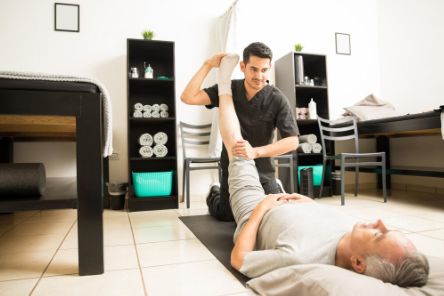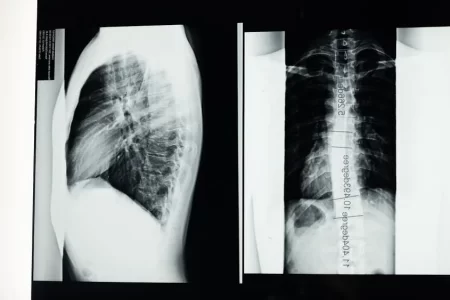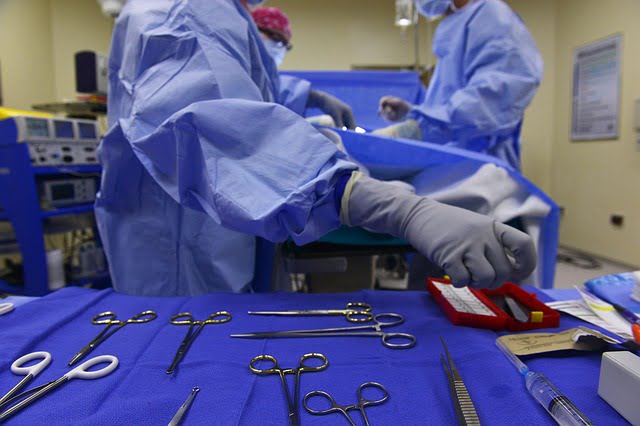
What is lumbar spinal stenosis?
Lumbar spinal stenosis is the most common form of spinal stenosis in which the spinal canal narrows and chokes the nerves which transmit the nerve impulse to the lower back of the body. It is the most common cause of leg and low back pain observed in people.
As people age, their bones starts degenerating and experiences wear-and-tear phenomenon. This aging phenomenon causes the narrowing of the spinal canal which is termed as spinal stenosis. Lumbar spinal stenosis is majorly seen in people above the age of 50.
What is congenital lumbar spinal stenosis?
Congenital lumbar spinal stenosis is a condition in which a person is born with the narrow spinal canal in the lumbar region. Congenital lumbar spinal stenosis is less severe as compared to the degenerative/acquired lumbar spinal stenosis and is commonly observed in people of age between 30 to 50 years. It is a rare condition and is usually seen in men.
Lumbar spinal stenosis causes
The most common cause of lumbar spinal stenosis is degenerative arthritis. Arthritis is a condition in which any bone in the body degenerates. Arthritis mostly occurs in the spine. Normally, in children and in young adults, the disks have high water content but this water content is reduced as the people get older. This results in the loss of the cartilage in between the joints which causes pain during body movements. As a result of this phenomenon, the disk spaces may collapse or settle.
The cause of lumbar spinal stenosis is mostly associated with aging. The facet joints are the small stabilizing joints which are located between the vertebrae. These joints become large as they degenerate and compress the spinal nerves in the lower back causing severe pain.
Causes of lumbar spinal stenosis
Apart from degenerative arthritis, some other causes of lumbar spinal stenosis are as follows:
Overgrowth of the bones
During osteoarthritis, the lumbar spinal bones experiences the wear and tear mechanism which results in the formation of bone spurs. This condition is known as osteophytes.
Herniated disks
Disks are soft cushions located in between vertebrae which acts as the shock absorber and protects the spinal cord from the physical jerks. As the age of a person progresses, these disks become dry and form cracks which allow the soft inner material to flow out of the spinal canal and press the spinal nerve or cord.
Spinal injuries
Due to car accidents or some other trauma, the vertebrae may be dislocated or fractured. This displaced bone can damage the contents of the spinal canal. Sometimes, swelling of the nearby tissues can also pressurize the spinal cord or nerves.
Tumors in bones
Tumors are abnormal growths which can occur anywhere in the body. Such tumors can form inside the spinal cord (bone tumors), in the spinal canal etc and may result in lumbar spinal stenosis.
Most people experiences lumbar spinal stenosis after the age of 50. Although, younger people may also suffer from this condition through degenerative changes, some other causes should also be considered. Some other causes are trauma, scoliosis, etc.
Lumbar spinal stenosis symptoms
The most common symptom of lumbar spinal stenosis is pain in buttocks and legs. This condition is medically termed as pseudoclaudication. People with lumbar spinal stenosis condition usually suffer from severe pain, tingling of legs, weakness, fatigue, heaviness, etc. These symptoms advances or increases as the person age.
Lumbar spinal stenosis patients are more comfortable at rest but they have a hard time walking without developing any kind of pain in their legs or back. This pain can travel from their back and buttocks to feet. This pain often reduces one’s physical activity level and people face difficulty in performing any task efficiently.
For every person, the symptoms show different levels of severity and duration. For example, in some cases, the pain is very severe and long lasting whereas in some cases, the pain is reduced as the person sits or takes rest immediately.
The most common lumbar spinal stenosis symptoms observed in patients are as follows:
- Back pain – people suffering from lumbar spinal stenosis usually suffer from back pain but it depends upon the level of arthritis development.
- Sciatica– sciatica is a condition in which the patient experiences burning pain in buttocks or legs. This is due to the pressure experienced on the spinal nerves. This pain starts from buttocks and moves down to the leg. It can even cause pain in foot.
- Foot drop- foot drop, commonly known as weakness in the legs occurs when the pressure reaches to its critical level. In such cases, patient feels as if his/her foot is slapping on the ground while they walk.
See also: Sciatica Pain Relief: What to Do for Sciatica Pain?
In some cases, the symptoms become so much adverse that the person is unable to carry out his or her daily activities and suffer from severe pain. This condition is termed as severe lumbar spinal stenosis. In such case of severe lumbar spinal stenosis, doctors usually advices the patient to undergo surgery.
Read also: Laminectomy Surgery: Procedure, Objectives, Risks, and Recovery
Lumbar spinal stenosis diagnosis
Since the symptoms of lumbar spinal stenosis are same as some other conditions, therefore, it is very important to correctly diagnose the condition for its proper treatment. Doctors begin the diagnosis for lumbar spinal stenosis with a complete medical history and physical examination.
He or she will first observe the symptoms, their duration and the level of pain experienced by the patient. After this, a physical examination is done to understand the severity of lumbar spinal stenosis. Once the physical examination is complete, the doctor may order some imaging studies which help in detecting anatomic signs of the lumbar spinal stenosis.
Some major imaging techniques used in diagnosing lumbar spinal stenosis are as follows:
- X-rays: X-rays can be used to determine whether a patient is suffering from lumbar spinal stenosis or not, although this technique is more often used to visualize bones. X-rays can clearly show if any damage has been done to the disks.
- Magnetic resonance imaging (MRI): MRI of a person provides a better image of soft tissues, like muscles, disks, nerves, spinal cord, etc.
- CT- scan: Computed tomography helps in creating a cross-sectional image of the spinal cord.
As soon as the diagnosis of the condition is complete, the doctor starts treatment depending upon the patient’s treatment response and condition.
Lumbar spinal stenosis treatment
In case of lumbar spinal stenosis, the treatment options are of two types –
- Non surgical treatments
- Surgical treatments
The mode of treatment depends upon the location of the condition, severity of the condition, patient’s age, and other factors.
Some treatment options for lumbar spinal stenosis often considered are as follows:
Non surgical treatment for lumbar spinal stenosis
Nonsurgical treatment is used to restore body functions and relieve pain. However, these treatment options do not help in curing the narrowing of the spinal canal. Patients have experienced that it help in relieving from the symptoms.
Some common non-surgical treatment options for lumbar spinal stenosis are as follows:
Physical therapy
Physical therapy involves stretching lumbar spinal stenosis exercises, massage, abdominal and lumbar strengthening. This helps in controlling the symptoms and relieving the patients from pain.
Lumbar spinal stenosis therapy
Regular exercise is the most important treatment option to control lumbar spinal stenosis. There are some very specific lumbar spinal stenosis exercises recommended to patients to increase their mobility and body movements. Some common exercises and techniques for treating this condition are as follows:
- Knees-to-chest stretch: In this exercise, the person has to lie on the back and draw both the knees to the chest and hug them to relax the spine. This position has to be held for 10 seconds and then slowly lower the legs.
- Knee rotation: In this exercise, the patient has to lie on the back with both the knees bent flat against the floor slowly rotating their knees to either side as far as the patient can reaches.
Anti-inflammatory medications
Since, lumbar spinal stenosis pain is caused due to extreme pressure on spinal nerve, reducing swelling around the affected area can help in relieving the pain. Some common pain relieving medications are ibuprofen, naproxen, acetaminophen etc.
Steroid injections
One powerful anti-inflammatory drug is cortisone. Cortisone injections are used around the epidural space which can reduce the swelling and pain. It is also used to reduce numbness.
Acupuncture
Acupuncture is a technique which can be used to treat mild lumbar spinal stenosis.
Decompression procedure
In decompression procedure, a needle-like instrument is used which increases spinal space by removing some portion of ligament in the back of the spinal column. This procedure can only be performed on people who are suffering lumbar spinal stenosis and thickened ligament.
Recommended: Non-Surgical Spinal Decompression Therapy
Surgical treatment
In case of severe lumbar spinal stenosis, surgery is usually the best treatment method. Surgery is usually performed to relive the pressure on the spinal cord thereby creating more space in the spinal canal. Some common lumbar spinal stenosis surgeries include:
Laminectomy for lumbar spinal stenosis
Laminectomy is also known as decompression surgery as it helps in releasing the pressure on the nerves. It acts by removing the back part or the lamina of the affected vertebra. Read more about laminectomy.
Laminotomy
Laminotomy is a procedure in which only the affected lamina is removed which forms a hole which relieves the pressure in that particular spot.
Minimally invasive surgery
Minimal invasive surgery is one of the latest approaches which are used to remove a bone or the lamina in such a way that nearby healthy tissues are protected from pressure.






